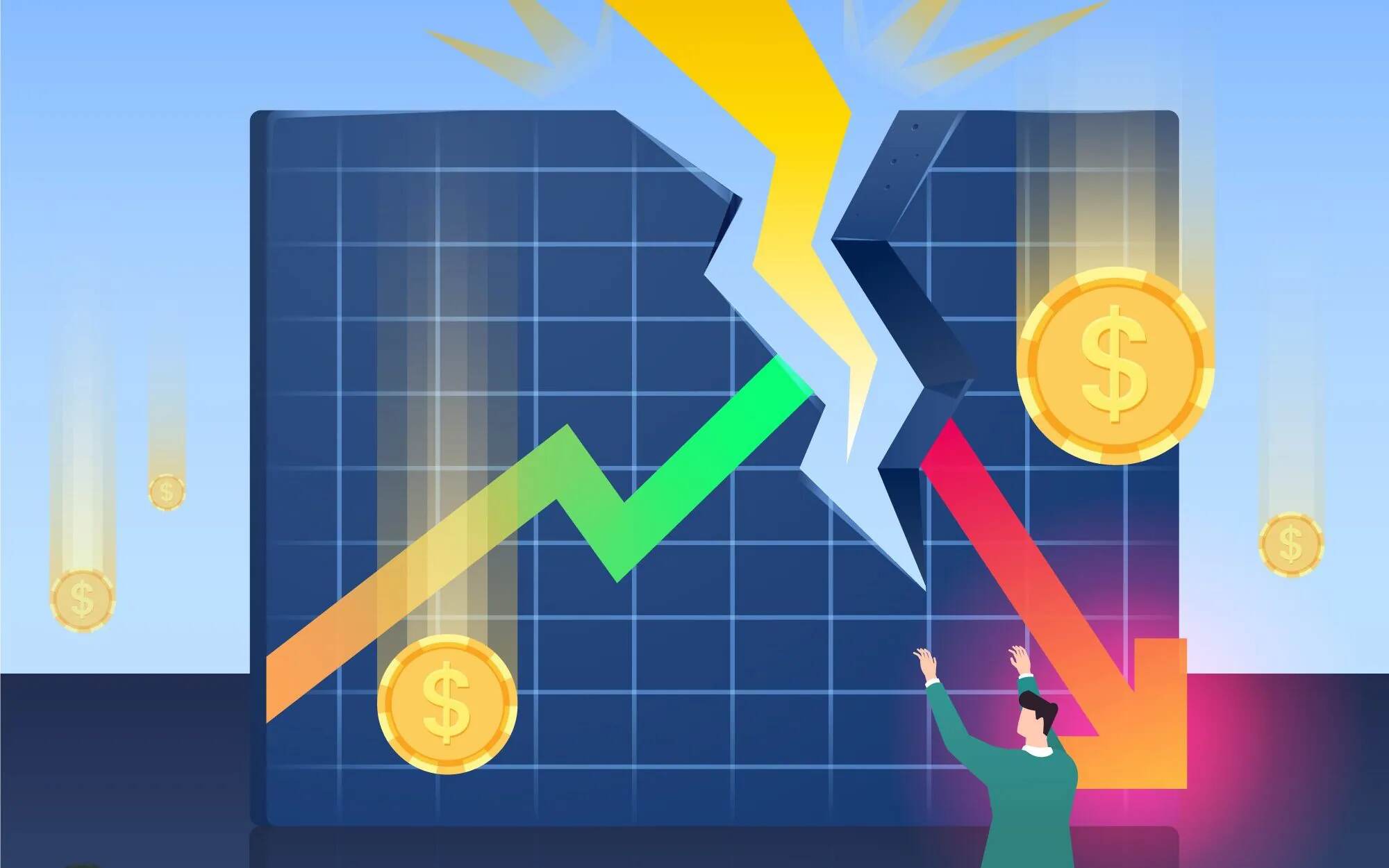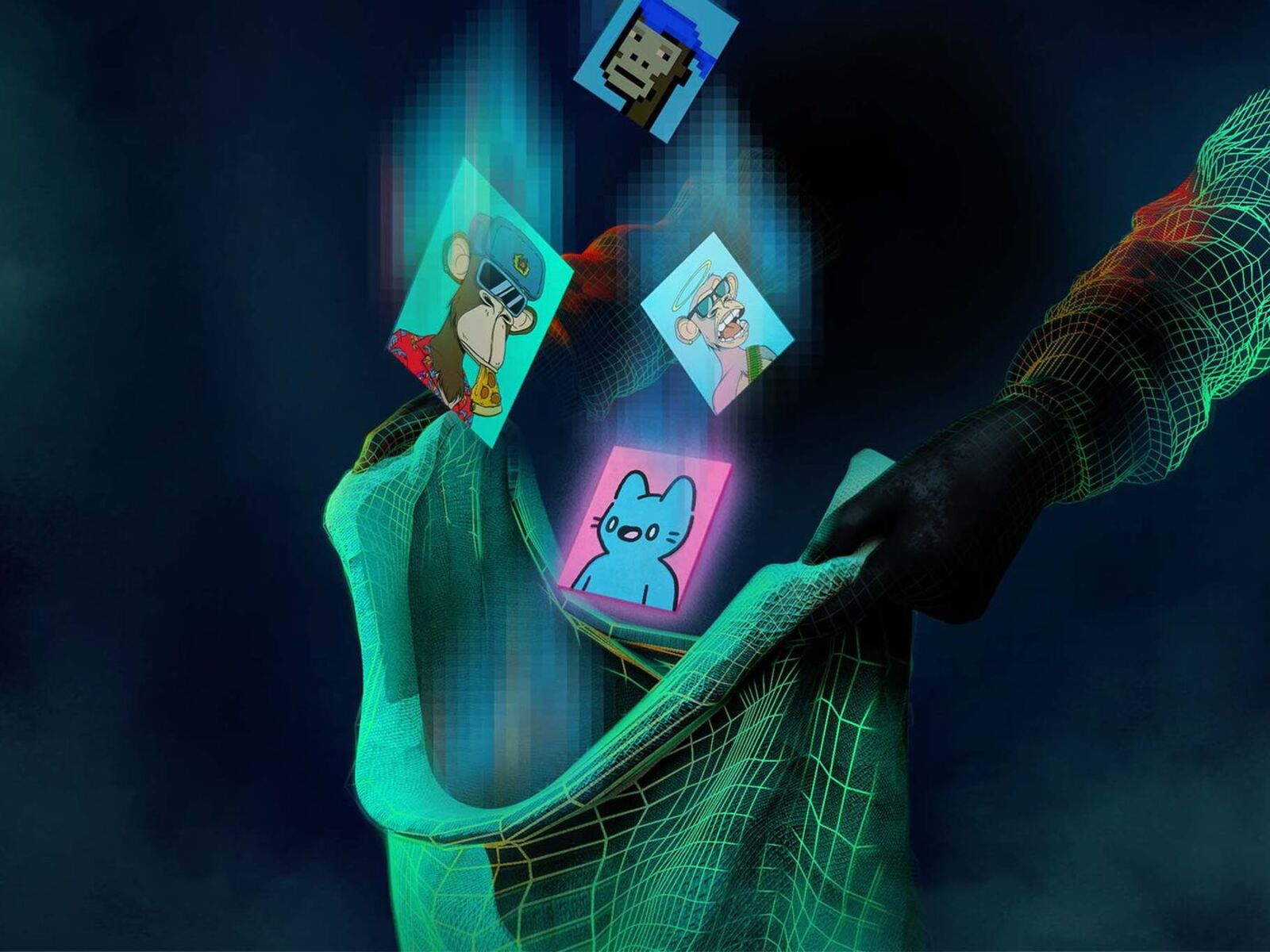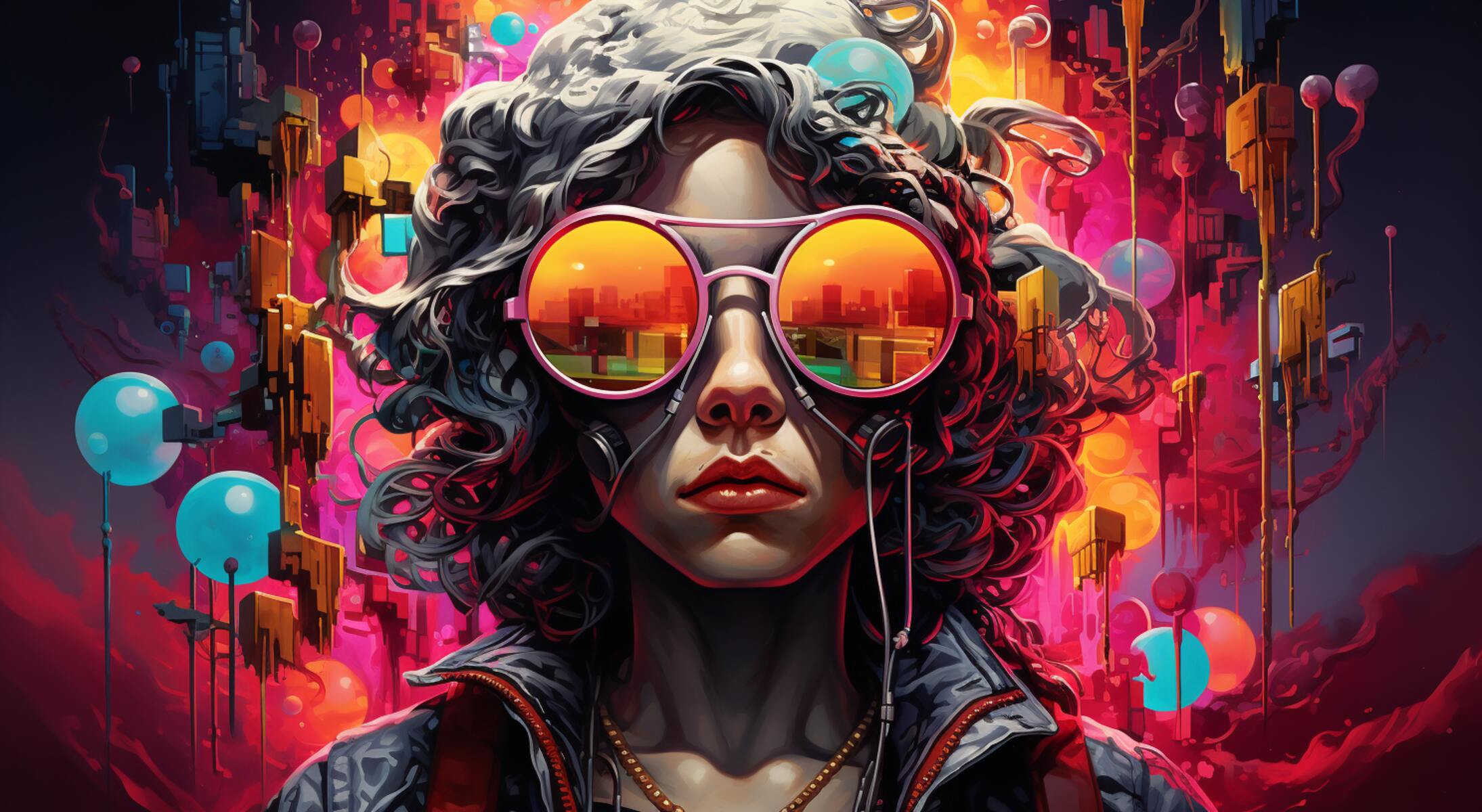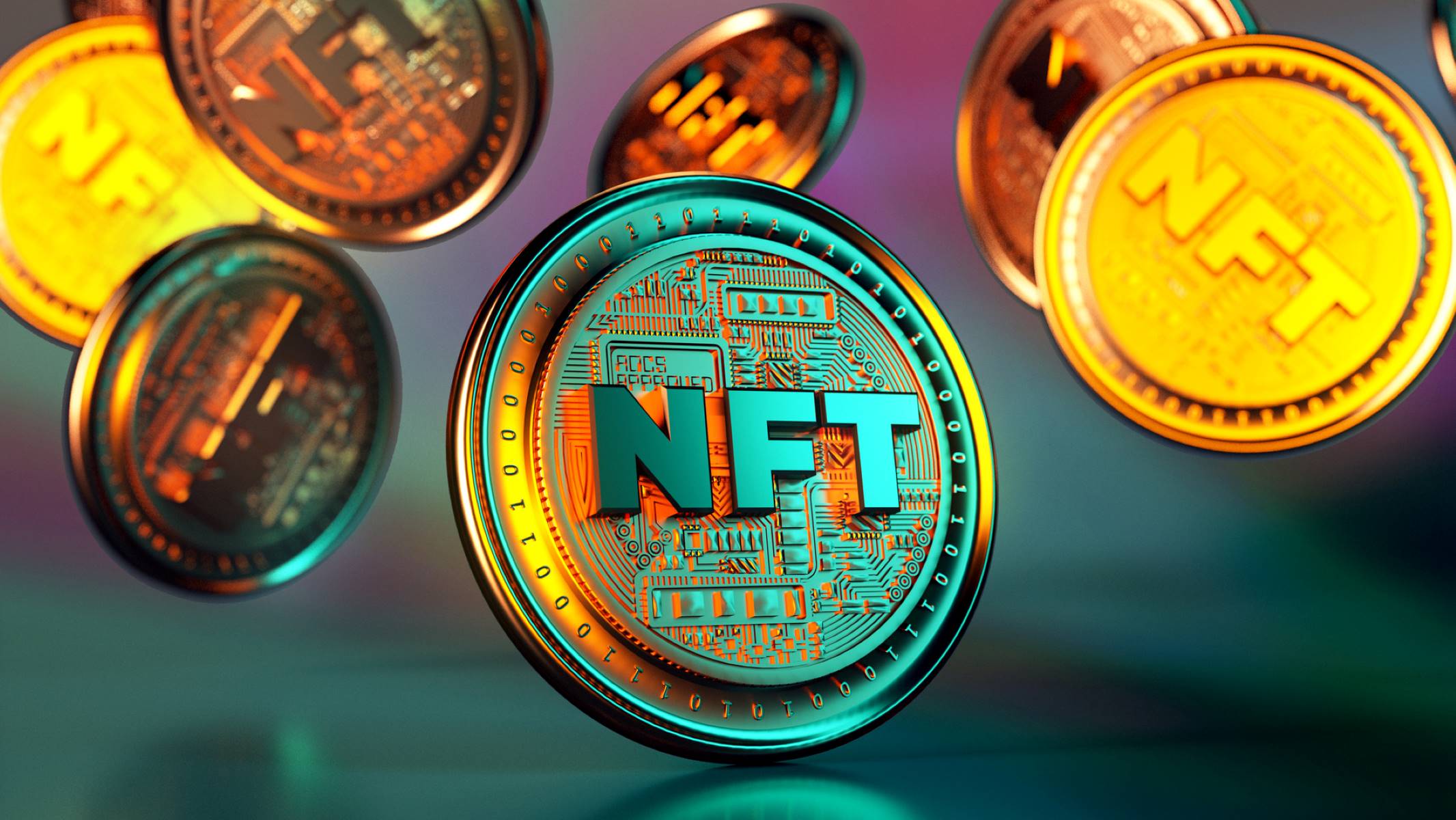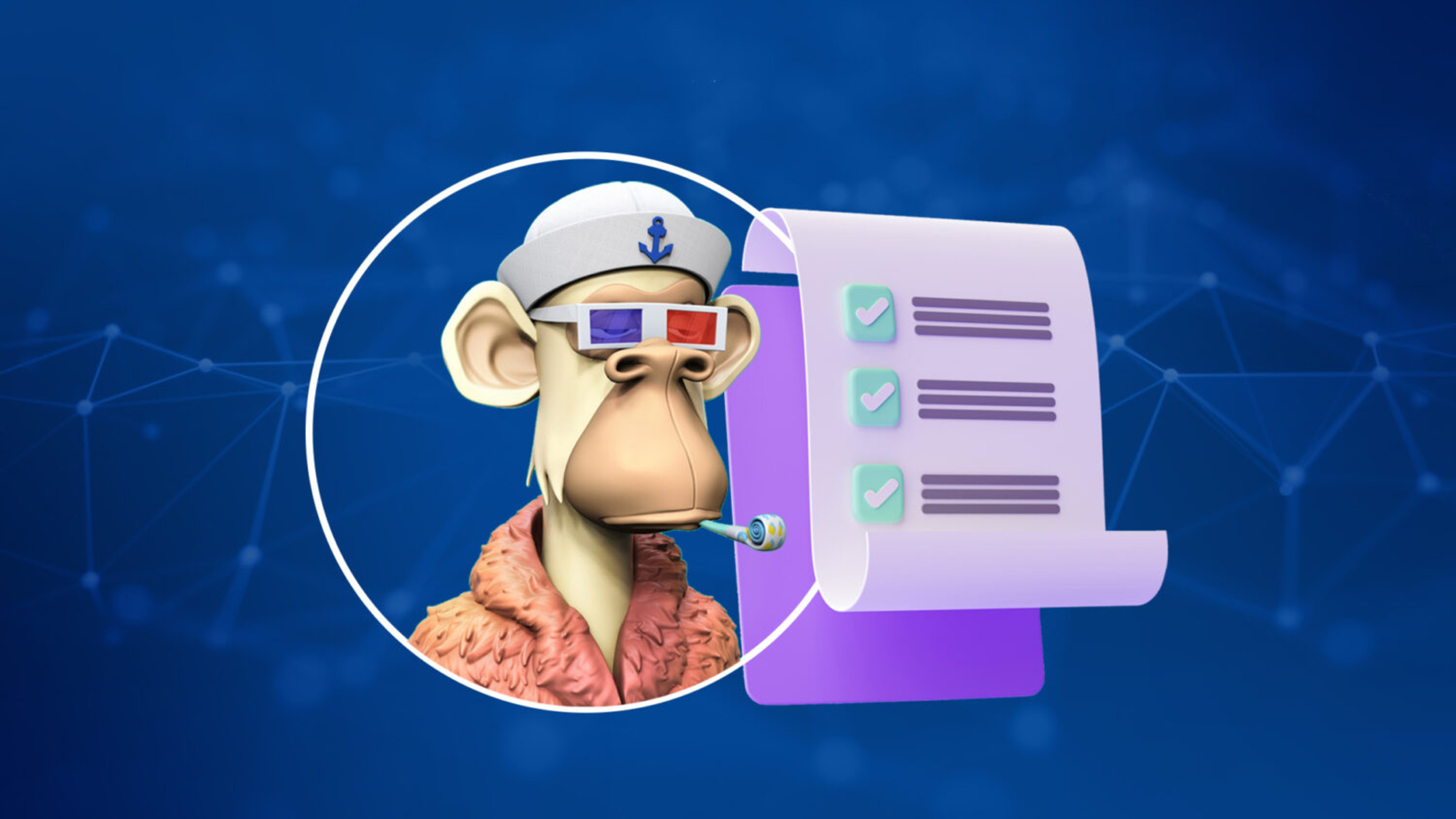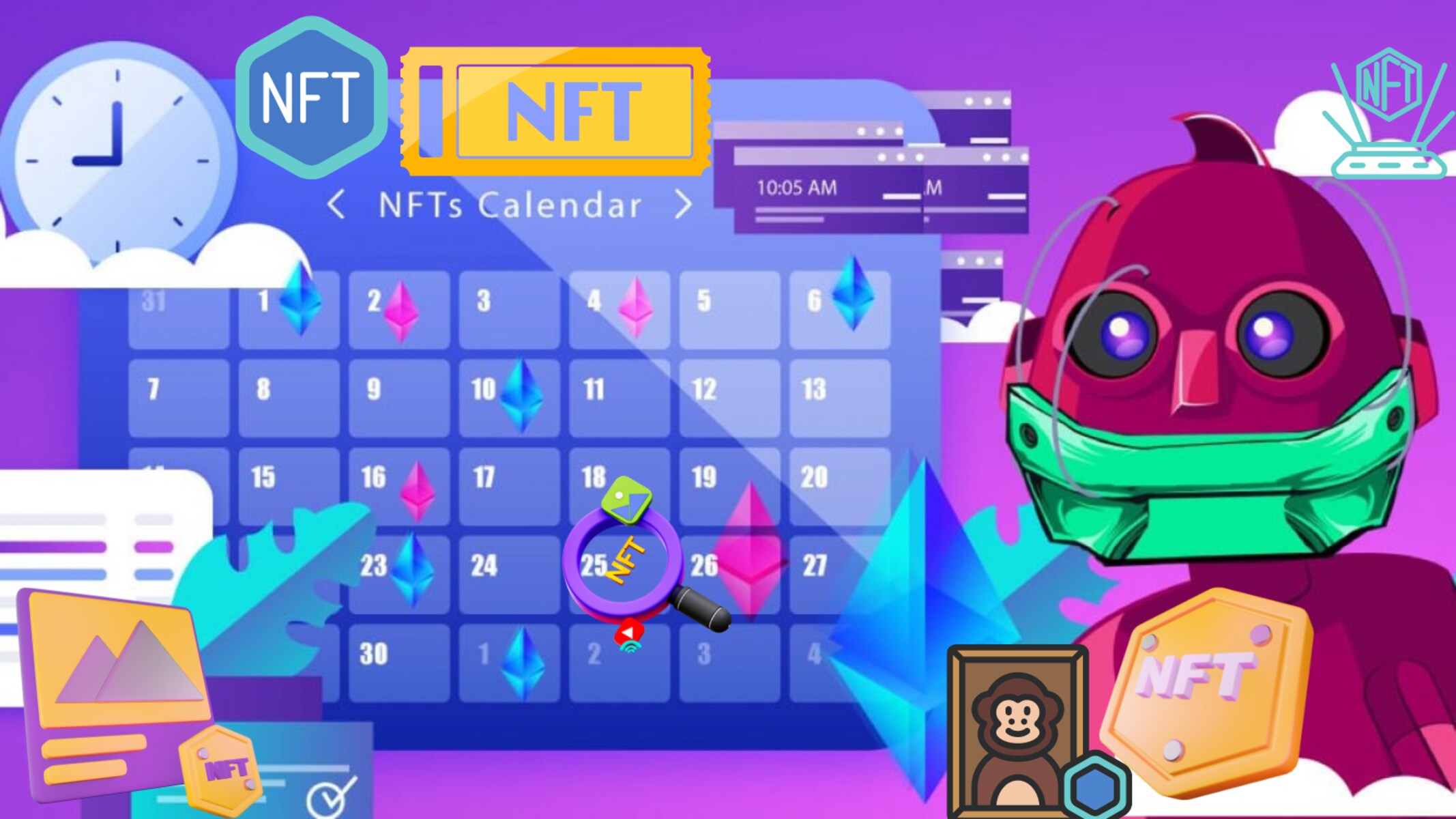Introduction
The online world has witnessed a fascinating phenomenon in recent years – the emergence of Non-Fungible Tokens (NFTs). These unique digital assets have garnered immense attention from investors, artists, and collectors alike. However, as with any rapidly evolving market, the NFT space has experienced its fair share of ups and downs. In this article, we will explore what has happened to the NFT market and delve into the factors that have influenced its trajectory.
First, let’s briefly understand what NFTs are. Unlike cryptocurrencies such as Bitcoin or Ethereum, which are fungible and can be exchanged on a one-to-one basis, NFTs are indivisible and possess distinct characteristics that make them one-of-a-kind. These characteristics enable digital assets like art, music, videos, and even virtual real estate to be tokenized and bought or sold using blockchain technology.
The rise of the NFT market has been nothing short of remarkable. In a relatively short span of time, the concept of owning digital assets has gained widespread popularity. Artists and creators have found a new avenue to monetize their work, while collectors have been attracted to the exclusivity and ownership rights that NFTs offer.
This exponential growth can be attributed to a variety of factors. One significant driver has been the increased mainstream attention and endorsement of NFTs by high-profile individuals and celebrities. Many renowned artists, musicians, and athletes have entered the NFT space, bringing with them their established fan bases and adding credibility to the market.
The initial boom and hype surrounding NFTs led to skyrocketing prices, with some digital artworks fetching millions of dollars. This attracted a wave of speculators and investors looking to capitalize on the rapidly appreciating values. However, this exuberance also gave rise to concerns and controversies within the NFT market.
One of the major concerns is the issue of market saturation and oversupply. With the ease of minting and selling NFTs, the market quickly became flooded with a plethora of digital assets. This abundance, combined with the lack of quality control, led to a dilution of value and made it challenging for artists and collectors to stand out amidst the noise.
Explaining NFTs
In order to understand the evolution of the NFT market, it is crucial to have a clear grasp of what NFTs actually are. Non-Fungible Tokens (NFTs) are unique digital assets that are stored on a blockchain, typically the Ethereum blockchain. Unlike cryptocurrencies such as Bitcoin or Ethereum, NFTs cannot be exchanged on a one-to-one basis due to their unique characteristics.
Each NFT is distinct and possesses individual properties that set it apart from other tokens. These properties include ownership details, provenance, and metadata that provide information about the asset. Artists, musicians, and creators can tokenize their work by minting NFTs, effectively creating a digital representation of their art, music, videos, or even virtual real estate.
One of the core benefits of NFTs is their ability to establish ownership and provenance in the digital realm. By utilizing blockchain technology, NFTs provide a transparent and immutable record of ownership, preventing fraud or unauthorized duplication. This verification process assures buyers that they are obtaining an original and authentic piece of work.
The concept of scarcity is another fundamental element of NFTs. Unlike traditional digital files that can be easily copied and shared, NFTs have limited availability. Artists or creators can choose to create a limited number of editions for their work, increasing the exclusivity and value of each NFT. This scarcity, coupled with the uniqueness of each token, adds a sense of rarity and collectability to the assets.
NFTs have opened up new possibilities for artists to monetize their work. Historically, the art world has been dominated by physical artwork, making it difficult for digital artists to gain recognition and financial success. NFTs have transformed this landscape by providing a platform for digital creators to showcase and sell their work directly to collectors and enthusiasts.
Moreover, NFTs offer creators the opportunity to receive royalties whenever their assets are resold in the secondary market. This feature, known as the “smart contract,” allows artists to benefit from the appreciation of their work even after the initial sale. This innovative aspect of NFTs has sparked excitement and attracted artists who were previously skeptical of the digital art market.
It is important to note that NFTs can represent a wide range of digital assets, not just artwork. Music, videos, virtual real estate, virtual goods in video games, and even tweets have all been tokenized as NFTs. This versatility expands the potential use cases of NFTs beyond the art world, making them a dynamic and multifaceted tool for creators and collectors alike.
Now that we have discussed the essence of NFTs and how they function, let’s delve into the rise of the NFT market and the factors that have shaped its trajectory.
The Rise of the NFT Market
The NFT market has experienced an unprecedented rise in popularity and adoption, captivating the attention of investors, artists, and collectors worldwide. The surge in interest can be attributed to several key factors that have contributed to the growth and success of the NFT market.
One of the primary drivers behind the rise of the NFT market is the increasing mainstream attention and endorsement it has received. Notable artists, musicians, and athletes have embraced NFTs as a way to monetize their creations and engage directly with their fans. Their involvement has brought immense visibility to the market and created a sense of credibility and legitimacy around NFTs.
Celebrities like Beeple, who sold a digital artwork for a staggering $69 million, and musicians like Kings of Leon, who released their latest album as an NFT, have demonstrated the potential for significant financial gains and innovative avenues for artistic expression within the NFT space.
Another factor contributing to the rise of the NFT market is the growing interest among collectors. NFTs offer a unique ownership experience, providing individuals with exclusive digital assets that can be displayed, traded, and shared. The digital nature of NFTs allows for easy access and storage, eliminating the need for physical spaces to showcase collections.
Moreover, the prospect of owning limited edition or one-of-a-kind digital assets appeals to collectors who seek rarity and uniqueness. The scarcity factor associated with NFTs, as well as the ability to verify authenticity and provenance through blockchain technology, has created a new level of trust and confidence in the digital art market.
The rise of decentralized finance (DeFi) and blockchain technology has also played a significant role in the growth of the NFT market. The secure and transparent nature of blockchain networks, coupled with the ability to execute smart contracts, has enabled seamless and efficient transactions for NFTs. This has reduced friction and barriers to entry, making it easier for artists and collectors to participate in the NFT market.
The advent of social media and digital platforms has also amplified the visibility and accessibility of NFTs. Artists and creators can easily promote their work, share their collections, and engage with their audience on platforms like Twitter, Discord, and dedicated NFT marketplaces. This interconnectedness has fueled the growth of the NFT community and facilitated the discovery and acquisition of digital assets.
The rise of NFTs can be characterized by an initial wave of excitement, hype, and groundbreaking sales. It has captured the imagination of artists, collectors, and investors, propelling the market forward. However, it is essential to address the concerns and controversies that have emerged alongside this rapid growth, which we will explore in the subsequent sections.
Mainstream Attention and Celebrity Involvement
One of the driving forces behind the rapid rise of the NFT market has been the significant mainstream attention and celebrity involvement it has garnered. The entrance of high-profile individuals into the NFT space has catapulted the market into the spotlight and attracted a wider audience.
Celebrity involvement in the NFT market has brought a sense of validation and credibility to the concept of owning digital assets. Renowned artists, musicians, athletes, and other influential figures have embraced NFTs as a new avenue for creative expression and monetization.
One notable example is the artist Beeple, also known as Mike Winkelmann, who gained widespread acclaim and media attention for selling a digital artwork titled “Everydays: The First 5000 Days” for a staggering $69 million. This auction, held at the prestigious Christie’s, marked a watershed moment for NFTs and solidified their place in the art world.
Additionally, musicians have seized the opportunities presented by NFTs. Kings of Leon made history by becoming the first band to release their latest album as an NFT, providing fans with exclusive content, perks, and ownership rights. This move sparked interest and curiosity among music lovers and demonstrated the potential for innovative distribution models using NFTs.
Celebrities outside of the art and music realms have also joined the NFT movement. Athletes like Rob Gronkowski and Patrick Mahomes have collaborated with NFT platforms to release unique collectibles, including digital trading cards and memorabilia. This crossover between sports and NFTs has attracted sports fans and collectors who see value in owning rare and limited edition digital assets related to their favorite athletes.
The involvement of high-profile individuals has led to an increased mainstream media coverage of NFTs. News outlets, magazines, and online publications have featured stories about the astronomical prices, record-breaking sales, and the potential for financial gains in the NFT market. This exposure has piqued the interest of a broader audience and driven curiosity and participation in the space.
Celebrity involvement has not only brought attention to the NFT market but has also influenced the behaviors and actions of their fan bases. Fans are often eager to support their favorite artists or celebrities, and the endorsement of NFTs by these figures has led to increased interest and investment from their followers.
However, the influx of celebrity-driven hype has also sparked debates and discussions within the NFT community. Some argue that the involvement of celebrities and the focus on high-value sales detract from the essence of NFTs as a medium for independent artists and creators. Critics argue that these high-profile transactions overshadow smaller artists and inflate the market, making it inaccessible for those without substantial financial means.
Nevertheless, the mainstream attention and endorsement of NFTs by celebrities have undoubtedly played a significant role in the growth and visibility of the market. It has brought NFTs into the public consciousness, sparked conversations, and paved the way for the widespread adoption of digital assets.
The Initial Boom and Hype
The NFT market witnessed an extraordinary boom and experienced a level of hype that captured the attention of investors, artists, and collectors around the world. This initial surge in interest can be attributed to several factors that fueled the excitement and rapid growth of the NFT market.
One of the driving forces behind the initial boom was the unprecedented price tags associated with some NFT transactions. High-profile sales, such as the $69 million sale of Beeple’s digital artwork, created headlines and generated a sense of FOMO (fear of missing out) among investors and collectors. These eye-popping figures attracted new participants to the market, hoping to capitalize on the potential for significant financial gains.
The allure of exclusivity also played a significant role in the early hype surrounding NFTs. The concept of owning a one-of-a-kind digital asset, verified through blockchain technology, attracted collectors who sought rarity and uniqueness. The limited supply of certain NFTs, combined with the potential for appreciation over time, created a sense of urgency and drove up demand.
Furthermore, the accessibility and ease of participating in the NFT market contributed to the initial boom. Anyone with an internet connection and a digital wallet could mint or purchase NFTs, eliminating many of the traditional barriers associated with the art market. This accessibility appealed to both established artists seeking new platforms for their work and aspiring creators who previously faced challenges in gaining recognition.
The hype around NFTs was further amplified by the media coverage and online discussions surrounding the market. News outlets, social media platforms, and online communities were abuzz with stories of record-breaking sales, digital art collections, and the potential for untapped financial opportunities. This constant exposure and discussion created a sense of excitement and curiosity, drawing more participants into the NFT space.
Unfortunately, the initial boom also led to speculative behavior and unsustainable price inflation. The market saw a surge in the number of new projects and collections vying for attention and investment. While some of these projects were innovative and had genuine artistic value, many were seen as cash grabs or attempts to ride the wave of popularity. This saturation of the market with low-quality or copycat NFTs raised concerns about artifice and inflated valuations.
Additionally, the hype around NFTs attracted individuals who viewed them purely as financial assets rather than appreciating their artistic or creative merit. Speculators entered the market seeking quick profits, causing prices to soar and creating a bubble-like environment. As with any bubble, there were concerns about sustainability and potential market corrections.
Despite the concerns and controversies, the initial boom and hype surrounding the NFT market brought newfound attention and recognition to digital assets as a legitimate form of ownership and investment. This early enthusiasm laid the foundation for further exploration, innovation, and evolution of the NFT space.
Concerns and Controversies
Alongside the excitement and hype surrounding the NFT market, various concerns and controversies have emerged that warrant attention and discussion. These issues have sparked debates within the NFT community and raised valid questions about the long-term sustainability and ethical implications of the market.
One of the significant concerns revolves around market saturation and oversupply. The ease of minting and selling NFTs has led to an influx of digital assets flooding the market. This abundance, coupled with a lack of quality control, makes it challenging for artists and collectors to distinguish valuable and authentic NFTs from low-quality or fraudulent ones. This oversaturation dilutes the market and contributes to a sense of noise and clutter.
Furthermore, the absence of regulations and standards in the NFT market has raised concerns about consumer protection and investor rights. Unlike traditional art markets, which have established systems for provenance and authentication, the NFT market lacks industry-wide practices. This lack of standardization poses challenges in guaranteeing the authenticity and ownership of NFTs.
Another controversial aspect is the environmental impact of NFTs. The energy consumption associated with blockchain technology, particularly the Ethereum network, has come under scrutiny. The process of minting and trading NFTs requires a significant amount of computational power, resulting in a carbon footprint that some argue is unsustainable. This ecological concern has prompted discussions within the NFT community about the need for more sustainable alternatives and the exploration of eco-friendly blockchains.
The issue of price volatility within the NFT market has also raised eyebrows. While some NFTs have achieved astronomical prices, there have been instances of drastic price declines and fluctuations. This volatility can be concerning for both artists and investors, as it introduces uncertainties and challenges in pricing and valuation.
Additionally, the rampant speculation and quick-profit mentality prevalent in the NFT market have drawn criticism. Critics argue that the market’s focus on financial gains detracts from the genuine appreciation of art and creative expression. Speculators, who view NFTs purely as investment assets, contribute to price bubbles and distort the perception of value within the market.
There are also concerns about the impact of NFTs on the traditional art world and the art market as a whole. Some worry that the rise of digital art through NFTs may devalue physical artworks and undermine the centuries-old systems of galleries, museums, and art institutions. The dynamic between digital and physical art and how they coexist in the market is a matter yet to be fully explored and understood.
Despite the concerns and controversies, they highlight the need for ongoing discussions, improvements, and responsible practices within the NFT space. The NFT community must address these issues to ensure the long-term viability and positive impact of the market on artists, collectors, and the wider creative ecosystem.
Market Saturation and Oversupply
One of the significant challenges faced by the NFT market is the issue of market saturation and oversupply. The ease of minting and selling NFTs has led to an abundance of digital assets flooding the market, creating a sense of noise and dilution of value.
With the barriers to entry significantly lowered, artists and creators have embraced NFTs as a means of showcasing and selling their work directly to collectors and enthusiasts. While this democratization of the art world is a positive aspect, it has also resulted in a surge of new projects, collections, and NFT drops.
The oversaturation of the market poses challenges for both artists and collectors. For artists, it becomes increasingly difficult to stand out and gain recognition amidst the sea of competing digital assets. Originality and quality become essential factors in distinguishing oneself from the crowd and attracting potential buyers.
Moreover, this oversupply of NFTs has made it challenging for collectors to navigate the market and identify valuable and authentic assets. With the lack of quality control and the absence of industry-wide standards, collectors face the risk of purchasing low-quality or fraudulent NFTs. This undermines trust and confidence in the market, affecting both buyers and sellers.
The oversupply issue also raises questions about the sustainability of the market. The rapid influx of new NFT projects and collections may create artificial demand and inflated valuations, similar to a speculative bubble. If left unchecked, such unsustainable growth could lead to a market correction and a loss of confidence among participants.
To address the issue of market saturation and oversupply, the NFT community and marketplace platforms need to focus on quality over quantity. Implementing stricter curation processes and quality control measures can ensure that only high-quality and authentic NFTs are available for sale.
Additionally, fostering a culture of innovation and pushing the boundaries of what can be tokenized as an NFT can help spark new interest and appeal within the market. Encouraging unique and creative use cases for NFTs can bring novelty and exclusivity to the ecosystem, attracting both artists and collectors seeking unique experiences.
Education and awareness are also crucial in mitigating the issue of oversupply. Providing guidance for artists on how to navigate the market, protecting their rights, and ensuring ethical practices can help maintain a healthy balance between supply and demand. Educating collectors about the importance of due diligence and verifying the authenticity and value of NFTs can also contribute to a more informed and discerning market.
By addressing the issue of market saturation and oversupply, the NFT market can establish a more sustainable and robust ecosystem that benefits artists, collectors, and the wider creative community.
Lack of Regulation and Transparency
One of the key challenges facing the NFT market is the lack of regulation and transparency. Unlike traditional financial markets and art industries, the NFT space operates with minimal oversight and standardized practices, leaving room for ambiguity and potential issues.
Regulation plays a vital role in protecting consumers and fostering trust within any market. In the case of NFTs, the absence of clear regulations leaves buyers and sellers vulnerable to fraudulent activities, lower-quality assets, and potential disputes. This lack of oversight can undermine confidence in the market and hinder its long-term growth and sustainability.
Furthermore, the lack of clear guidelines and standards for provenance and authentication makes it challenging for collectors and investors to determine the authenticity and value of NFTs. Unlike the traditional art market, where authentications are regulated and documented, the NFT market often relies on individual artists or platforms to verify ownership and provenance. This decentralized verification process, while innovative, can lead to inconsistencies and uncertainties.
Transparency is another crucial aspect that needs improvement in the NFT market. Currently, the lack of detailed and standardized information about NFT projects and their creators makes it difficult for buyers to make informed decisions. The absence of comprehensive disclosures regarding the rights, royalties, and limitations associated with an NFT can lead to misunderstandings and potential disputes down the line.
Addi
Environmental Impact of NFTs
One of the prominent concerns surrounding the NFT market is its environmental impact. The energy consumption associated with blockchain technology, particularly the Ethereum network, has come under scrutiny due to its carbon footprint and energy intensity.
The process of minting and trading NFTs requires significant computational power and energy resources. The Ethereum network, which is commonly used for NFT transactions, relies on a consensus mechanism called “proof of work,” which requires complex calculations to validate transactions and maintain the integrity of the blockchain. This process consumes a substantial amount of electricity, contributing to greenhouse gas emissions and climate change.
While it is challenging to precisely measure the exact environmental impact of NFTs, studies have indicated that the carbon footprint of a single NFT transaction can be significant. The carbon emissions associated with one NFT sale can be compared to powered homes for several months or even years.
These environmental concerns have sparked debates within the NFT community, with calls for more sustainable alternatives. One proposal is the adoption of blockchain networks that utilize more energy-efficient consensus mechanisms, such as “proof of stake.” This alternative approach requires users to show ownership of a certain number of tokens to validate transactions, dramatically reducing energy consumption and carbon emissions.
Efforts are also being made to offset the environmental impact through carbon offset programs and eco-friendly initiatives. Some NFT marketplaces and artists have pledged to donate a portion of their proceeds to environmental causes or purchase carbon credits to neutralize the carbon footprint resulting from their NFT activities. These initiatives aim to mitigate the negative impact and promote sustainability within the NFT ecosystem.
It is important for the NFT industry to address its environmental impact, considering the growing popularity and increased adoption. Emphasizing sustainability and exploring energy-efficient alternatives will help mitigate the carbon footprint associated with NFTs and align the market with broader climate-conscious efforts.
Moreover, educating artists, collectors, and market participants about the environmental implications of NFTs is crucial. Raising awareness about the carbon footprint associated with NFT transactions can encourage individuals to consider sustainable options and make informed choices.
As the NFT market continues to evolve, it is essential to find a balance between the benefits of digital ownership and the environmental consequences of blockchain technology. By promoting sustainability and encouraging responsible practices, the NFT market can minimize its environmental impact and contribute to a more environmentally conscious future.
Investor Disillusionment and Price Volatility
As with any emerging market, the NFT space has experienced periods of investor disillusionment and price volatility. The speculative nature of the market, coupled with the rapid rise in popularity, has led to dramatic price fluctuations that can impact both investors and artists.
During the initial boom of the NFT market, prices soared to unprecedented levels, capturing the attention of investors seeking quick profits. The fear of missing out (FOMO) drove many to invest in NFTs without fully understanding the underlying value or long-term prospects. However, when market sentiment shifted or hype subsided, some investors found themselves holding assets with significantly diminished value.
This price volatility within the NFT market can be attributed to several factors. The rapid influx of new projects and collections, coupled with increased speculation, can cause inflated valuations and create price bubbles. When these bubbles burst or when investors take profits, prices can quickly decline, resulting in substantial losses for those who bought at the peak.
Moreover, the illiquid nature of NFTs can intensify price volatility. Unlike publicly traded stocks or cryptocurrencies, NFTs often have lower liquidity, meaning there may be fewer buyers and sellers in the market. This thin trading volume can amplify price movements, making it easier for potential market manipulations to occur.
Investor disillusionment can also arise when the perceived value of NFTs fails to align with expectations. Some investors may have bought into the concept of NFTs purely for speculative purposes and financial gains, rather than an appreciation for the art or the underlying creative work. When the focus solely revolves around monetary returns, investors may feel disillusioned if they do not see substantial profits or if the market fails to meet their expectations.
Furthermore, the lack of regulation in the NFT market can contribute to investor skepticism. Without standardized practices, clear guidelines, and reliable metrics for evaluating NFTs’ value, investors may feel uncertain about making informed investment decisions. This lack of transparency and oversight adds to the overall market risk and may deter potential investors.
It is important for investors to approach the NFT market with caution and conduct thorough due diligence. Understanding the underlying value of the NFT, assessing the credibility and reputation of the artist or creator, and considering long-term potential rather than short-term gains can help mitigate the risks associated with price volatility.
Similarly, artists and creators should focus on building genuine engagement with their audience and creating long-lasting value through their work. By cultivating a strong community and emphasizing the artistic and creative aspects of NFTs, artists can establish a foundation of support and reduce reliance on short-term speculative demand.
As the NFT market continues to evolve, it is crucial for investors and participants to maintain realistic expectations, be mindful of the inherent risks, and approach the market with a long-term perspective.
The Future of the NFT Market
The future of the NFT market holds immense potential for continued growth, innovation, and maturation. Despite the challenges and controversies, the underlying technology and the concept of digital ownership are likely to shape various industries and redefine how we perceive, distribute, and access creative assets.
One key aspect that will shape the future of the NFT market is the implementation of industry-wide standards and regulations. As the market continues to evolve, there is a growing need for transparent practices, standardized procedures for provenance and authentication, and clearer guidelines for NFT creation and distribution. These efforts will enhance consumer protection, establish trust, and foster broader adoption of NFTs.
Interoperability between different blockchain networks and marketplaces will be crucial for the future development of the NFT ecosystem. Currently, most NFTs are based on the Ethereum blockchain, but emerging platforms and blockchain networks are entering the space. Ensuring seamless interoperability will provide artists and collectors with more options and foster a diverse and vibrant market landscape.
Technological advancements will continue to shape the future of the NFT market. As blockchain technology evolves, improvements in scalability, energy efficiency, and transaction speeds will address the current challenges and limitations. This will enable a broader range of artists and collectors to participate while minimizing the environmental impact associated with NFTs.
In addition to improvements in technology, the integration of augmented reality (AR) and virtual reality (VR) could transform how NFTs are experienced. By blending digital assets with the physical world, AR and VR can create immersive and interactive experiences, adding a new layer of engagement and value to NFTs.
The NFT market is likely to experience increased collaboration and partnerships between artists, brands, and platforms. In the future, we can expect more prominent collaborations that combine art, music, fashion, and gaming to create unique and multidimensional NFT experiences. This convergence of different industries will expand the reach and impact of NFTs, attracting more participants and pushing the boundaries of what is possible.
Furthermore, the NFT market will continue to evolve beyond artwork and collectibles. NFTs have already expanded into areas such as music, virtual real estate, and even intellectual property rights. As the concept gains mainstream acceptance, we could see NFTs being utilized in various industries, such as ticketing, licensing, and supply chain management.
Education and awareness will also play a vital role in shaping the future of the NFT market. Providing resources and guidance for artists, collectors, and investors will foster a more informed and responsible ecosystem. By promoting understanding and transparency, the NFT market can thrive sustainably and ensure the equitable participation of all stakeholders.
While the future of the NFT market holds promise, it is essential to address the challenges and concerns that have emerged along the way. By addressing market saturation, ensuring transparency, promoting sustainability, and establishing clear regulations, the NFT market can forge ahead as a vibrant and influential sector within the broader creative and financial landscapes.
Conclusion
The NFT market has experienced a remarkable journey, marked by exponential growth, enthusiastic hype, and a range of challenges and controversies. As the concept of digital ownership continues to evolve, the future of the NFT market holds immense potential for innovative development and widespread adoption.
NFTs have opened up new possibilities for artists to monetize their work and engage directly with their audience. Through the blockchain technology, NFTs provide transparent ownership records, immutability, and unique characteristics that make them distinct and valuable digital assets.
Mainstream attention and celebrity involvement have played significant roles in attracting interest and legitimizing the NFT market. High-profile artists, musicians, and athletes have demonstrated the potential for success and financial gains within the space, arousing curiosity and prompting others to participate.
However, challenges and concerns have emerged alongside the NFT market’s rapid growth. Market saturation, lack of regulation, transparency, environmental impact, investor disillusionment, and price volatility are among the issues that warrant attention and mitigative efforts.
To ensure the long-term viability and sustainability of the NFT market, industry-wide standards and regulations need to be established, along with improved transparency and authentication processes. Exploring more energy-efficient blockchain solutions is essential to address the environmental impact of NFTs and promote sustainability.
The future of the NFT market will involve continued technological advancements, interoperability, and collaborations across various industries. Augmented and virtual reality will enhance the immersive experiences associated with NFTs, expanding their potential applications beyond artwork and collectibles.
Educating and fostering awareness among artists, collectors, investors, and market participants will be crucial for responsible and informed engagement with NFTs. By promoting understanding and responsible practices, the NFT market can thrive in a manner that benefits all stakeholders.
In conclusion, the NFT market is a rapidly evolving landscape that offers exciting opportunities and potential. By addressing challenges, embracing innovation, and promoting responsible practices, the NFT market can establish itself as a transformative force within the broader creative and financial ecosystems.







